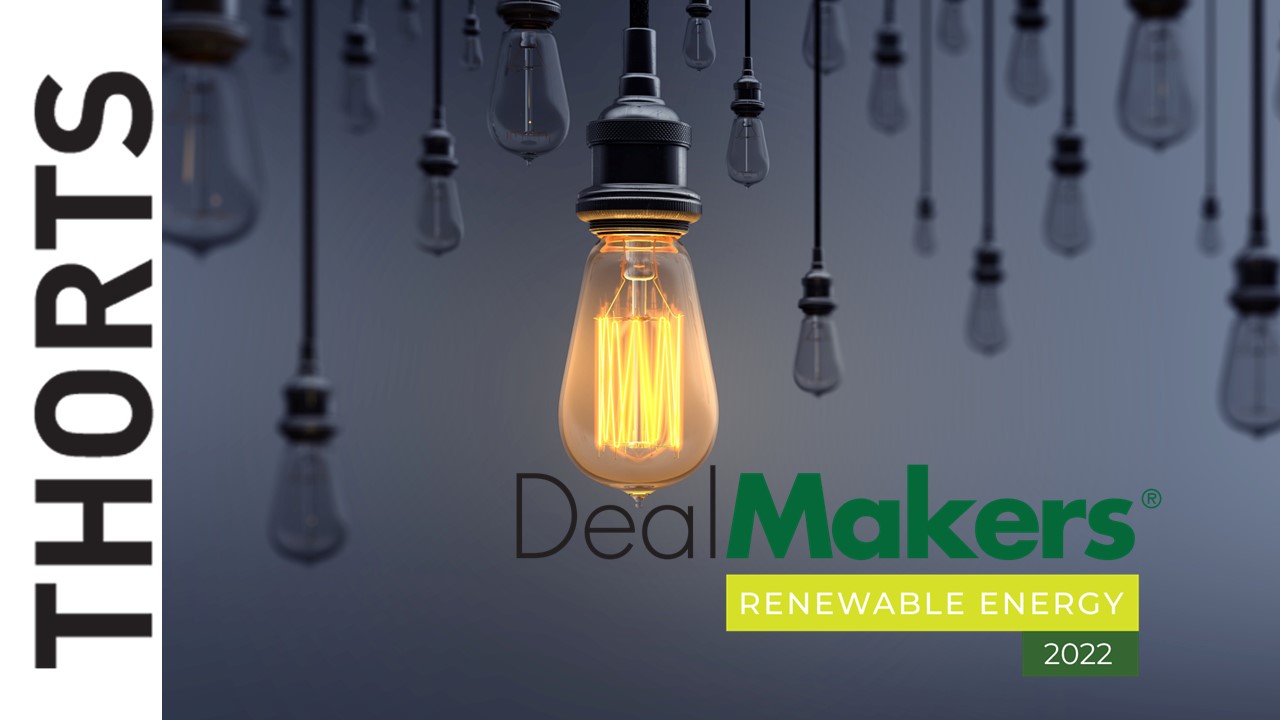The pressure on South Africa’s power grid has created the need for a larger number
of corporates to come to market to procure power within a short space of time. This has been exacerbated by the gradual decommissioning of Eskom’s coal fleet and increased energy requirements of an urbanised population and rapid industrialisation.
Yet there is potential beyond the worthy task of alleviating pressure on the grid. Going partially or fully off grid assists corporates to reach their decarbonisation goals and ensures a greater certainty of power supply at a stable price, which in turn leads to the stability of a corporate’s bottom line and, ultimately, sustainable economic growth for South Africa.
The deregulation of the sector has spurred a wave of corporate and industrial users seeking to generate their own power or procure power from an Independent Power Producer (IPP). This can assume a number of forms.
ON-SITE GENERATION – in this case, rooftop solar or ground mounded installations have become popular solutions for the corporate and industrial (C&I) private sector. The South African Photovoltaic Industry Association (SAPVIA) estimates that there is 2GW of installed rooftop solar capacity in South Africa at the moment, 70% of which represents the C&I sector. These solutions offer an alternative energy supply which is unaffected by load-shedding. However, sizing of the facility is constrained by available space on site.
IPPs – Large corporate and industrial companies have typically opted to outsource their renewable energy procurement from IPPs. This model can either follow a behind-the-fence solution on the companies’ premises, or a wheeling solution, with the latter being the most adopted solution by large C&I.
THE WHEELING SOLUTION – where power is generated at a project site in a different location and delivered to the buyer via the Eskom transmission and distribution infrastructure – is subject to an additional wheeling charge levied by Eskom, which forms part of the overall cost of the renewable energy. Wheeling over the Eskom network is relatively well understood by the market.
RMB has demonstrated the success of this method with clients, including closing the first project-financed wheeled renewable energy transaction for Harmony Gold. Wheeling requires grid capacity from the point whereby the power is generated to the offtaker. With grid capacity constraints experienced in certain parts of South Africa, this is a key concern that could represent a major stumbling block for the quick roll-out of wheeling projects. The transmission infrastructure needs urgent upgrades in order to handle the country’s growing electricity needs, provide reliable power, along with being able to facilitate the targets
set in the Integrated Resource Plan of 2019, which stipulates an additional 30GW of new generation capacity by 2030. In addition, not all corporates have an Eskom connection; many are connected to municipal grids.
BATTERY STORAGE – In addition to a pure renewables solution, corporates should consider the use of battery storage in conjunction with a renewables solution in order to truly unlock the full benefit of a renewables solution. Given the variable nature of wind and solar resources, excess power generated could be reliably stored via a battery energy storage solution for use when required – usually during a period of peak demand. The cost of the battery solution is an important consideration for corporates and should be seriously considered as a key element in unlocking the provision of reliable power.
A VISION FOR EFFECTIVE POWER PRODUCTION IN SOUTH AFRICA
Fully realising the potential of diversified and renewable energy in South Africa requires an
enabling market that is able to cater for the energy requirements of a variety of customers. We believe that the energy exchange model is able to further open the market for a wider range of energy consumers by removing market constraints associated with the bilateral power generator and customer model. Allowing customers access to a wider range of technology sources enables the matching of supply and demand through the exchanges’ ability to access a pool of different energy sources, particularly with renewable energy sources that vary in effectiveness based on the time of day, season and are dependent
on an unpredictable resource. These platforms also create a liquid market for the procurement of electricity on a basis that better suits the unique needs of the procuring entity, whose requirements would vary as it pertains to tenor, size and consumption profile. In this regard, energy exchanges are the catalyst for change that is needed to cater for the nuanced customer market elements together.
Internationally, there are many examples of energy exchanges, from the European Energy Exchange (EEX) to Australia’s National Electricity Market (NEM), all of which are slightly different, depending on the markets they serve. What they all have in common, however, is that they consolidate or facilitate the consolidation of multiple energy sellers and energy buyers into a single marketplace for wholesale energy trading. The Energy Exchange of Southern Africa is a local example which has evolved from these global examples to meet local needs, acting as a marketplace where independent generators can sell their surplus energy to the industrial and commercial entities.
In conclusion, corporate South Africa has multiple options when it comes to securing independent power supply, but this should be complemented by an enabling market.
Amber Bolleurs and Pranisha Sahadeo are Senior Transactors and Sindisiwe Mosoeu is a transactor – Infrastructure Sector Solutions | RMB (South Africa)

This article first appeared in the DealMakers’ Renewable Energy 2022 Feature
DealMakers is SA’s M&A publication
www.dealmakerssouthafrica.com



